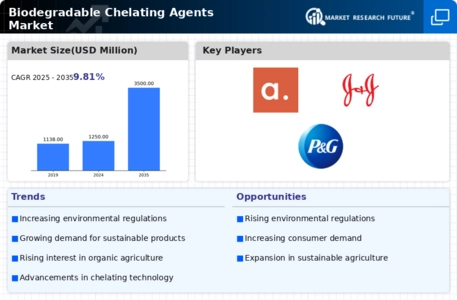Market Share
Biodegradable Chelating Agents Market Share Analysis
The biodegradable cheating agents market is a significant part of the chemicals sector and environmental industry, where market shares have come under siege from competitors' various strategic positioning tactics. A key strategy entails differentiation based on eco-friendliness and degradability. Consequently, companies operating within the biodegradable chelating agents sector spend heavily on research and development so as to introduce advanced formulations with distinctive features like effective metal ion binding properties, compatibility with living systems, and fast degradation rates. Another important approach in this respect is cost leadership among players in such markets who focus on improving their production processes through economic raw material sourcing while taking advantage of economies of scale to avail competitive chelate prices to consumers, being more relevant when deciding on whether or not to use some chemical ingredients mainly in sectors such as detergents and agriculture industries. Market share for biodegradable chelating agents is shaped by collaboration and strategic partnerships. Some of these alliances include water treatment plants, detergent makers, and agrochemical companies. Supply chain operations are made more efficient through collaborative efforts, which entail the creation of a consistent and dependable delivery framework. In the biodegradable chelating agents market, it is increasingly important to be customer-centric. This involves understanding needs, such as specific formulation requirements, compliance with environmental regulations, and technical support that would help sustain growth in market shares for a long-term period. Companies invest in research and development to create formulations of biodegradable chelating agents that meet both industry standards that evolve with time and the specifications of customers. The biodegradable chelating agents market has seen increased eco-friendly positioning approaches among organizations operating in it as they try to balance profitability and sustainability issues required by regulatory agencies. Customers today demand chemical substances that are safe to use in various applications due to their environmental awareness. Some businesses dealing with this kind of product are moving towards bio-based materials, employing green chemistry techniques, while others promote the recyclability of their goods. Such enterprises position themselves on the platform of being sensitive to environmental issues, thus attracting a niche segment targeting sustainable alternatives, thereby growing their market share and maintaining positive perception within the community.






Leave a Comment